How to Start a Design Blog to Grow Your Business
Well, well, well, if it isn't my fellow design ninjas! Listen up, my friends, because I've got some important news for you – if you're not blogging, you're missing out on a chance to level up your business. It's like not having a secret weapon in your arsenal. And who doesn't want a secret weapon, right?
Now, some of you might be thinking, “Blogging? Isn't that just for the big dogs with big bucks?” Let me tell you, my friend, that's a load of hogwash. According to a study, 91% of marketers already use content marketing, and blogs are among the top three channels used. So, if you're not jumping on this bandwagon, you're missing out on a piece of the pie!
But I get it; starting a design blog can be daunting, especially if this is your first time doing it. So, here's what you must do: first, figure out whom you're talking to. That's right; I'm talking about your target audience. Who are they? What do they want? What keeps them up at night? It's like trying to impress your in-laws – you must know what they like!
Once you know your target audience, it's time to create content that they'll love. It's like cooking their favourite meal, but it's blog posts instead of food. And trust me; your audience will devour it like it's their last meal.
Last but not least, you need a solid plan. It's like chess – you need to think ahead and strategise. You need to know what kind of content you're creating and how you will promote it.
Table of Contents
Understand your Audience

Before you start a design blog, let's get one thing straight – you need to know whom you're talking to. It's like going on a blind date without knowing anything about your date – it's a recipe for disaster.
So, who is your audience? We assume it's your ideal customer, but do you know who that is? If you've already created a perfect customer persona, kudos to you! If not, let's take a pause and create one. Think of it as building your dream client – their interests, goals, and the problems you can solve. It's like playing The Sims, but for your business!
Once you know your dream client, you can create blog content that speaks their language. Think of it as a secret code only you and your dream client understand. It's like creating your secret handshake but without the hand part.
But wait, there's more! We'll also need a content strategy. This is like the blueprint for your blog – what kind of content you'll create and how you'll promote it. It's like building a treehouse but without a tree. Or the house. Okay, it's not like building a treehouse at all.
Let's recap – create your dream client persona, create content that speaks their language, and have a solid content strategy. Easy peasy, lemon squeezy! Now, let's get started on that blog and watch your business soar!
Choose the Perfect Design Blog Name
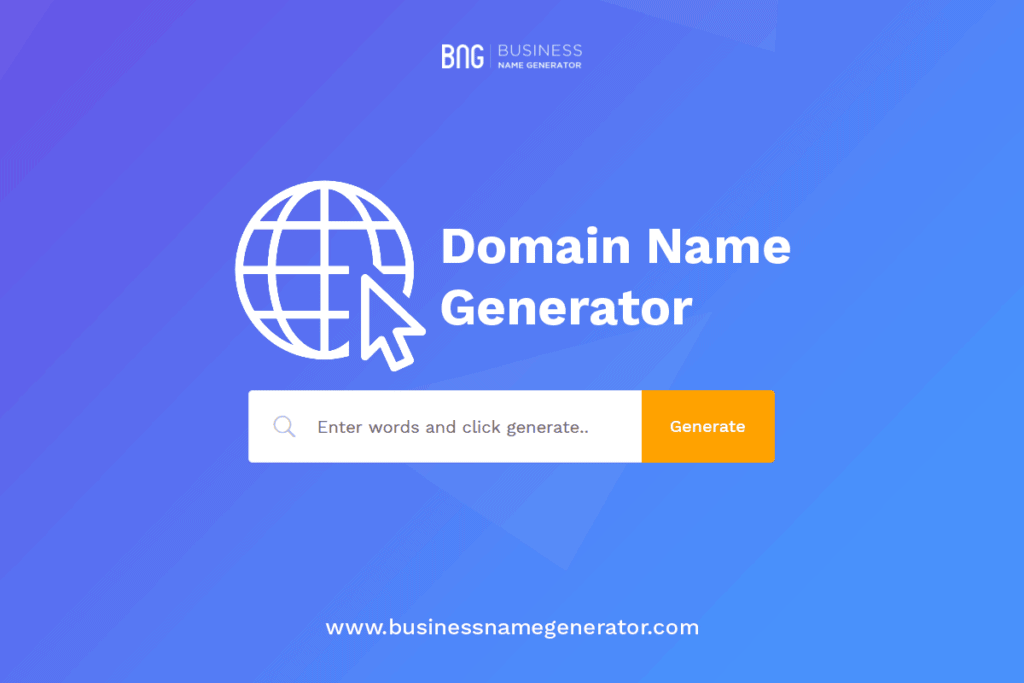
You may be tempted to use your name when you start a design blog, but let's be honest, unless your name is Beyoncé or Cher, it won't be that memorable. So, how do you develop a catchy and relevant name that will stick in your audience's mind like gum on a shoe?
Here are a few tips to help you arrive at the perfect blog name without resorting to just adding “blog” at the end of your name (seriously, don't do that):
- First, read books or articles in your niche. You might find a word or short phrase that could make a great blog name. And hey, you'll learn something, too – it's like killing two birds with one stone.
- Next, write down all the words and phrases related to your field that you can think of. You might be surprised at what pops out at you – like a jack-in-the-box you thought you'd left behind in your childhood.
- Consider using alliteration, where two or more words start with the same letter. Alliterative names are more memorable and catchy, like “Peter Piper picked a peck of pickled peppers.” (Okay, not that memorable, but you get the idea.)
- Another option is to use a pun that's relevant to your niche. Good Financial Cents is an excellent example of this – memorable, punny, and relevant to the personal finance niche.
- You could also use the X & Y formula, like “Design and Tea”, a blog by designer Julieta Molina. Or you could use a portmanteau, a combination of two words, like Listverse, which combines “list” and “universe”.
- If all else fails, you could always use a generator like Nameboy. Be prepared for weird suggestions like “Purple Turtle Creative” or “Lemon Bumblebee Design”. (Okay, those aren't that bad, actually.)
So, here are some tips for creating a memorable and catchy blog name. Remember, your blog's name is like its first impression, so make it a good one. And please, for the love of all that is good, don't just use your name followed by “blog”.
Purchase your Domain

Now that you've come up with a catchy name for your blog, it's time to get down to business and purchase your domain and hosting package. Unless you want to spend your entire weekend learning how to code, I recommend using an intuitive site builder and content management system (CMS). Leave the coding to the experts, and focus on what you do best – creating excellent content.
You can set up your blog using a subdomain if you already have a professional website. Think of it like a tree branch growing out of your website – for example, awesomedesignblog.bobsmith.com. Don't get too carried away and end up with a domain name longer than your latest blog post.
Now, let's talk about free domains. It may be tempting to save a few bucks and use a free hosting service like awesomedesignblog.wordpress.com, but it's not worth it. First of all, it needs to be more professional. It's like showing up to a job interview wearing your pyjamas. And secondly, you won't be able to monetise your blog on a free hosting service. And if you try to make a buck sneakily, they'll shut you down faster than you can say “blogging disaster”.
So, go ahead and invest in your domain, like awesomedesignblog.com. Your blog will thank you, and so will your future customers!
Make your Blog Visually Appealing
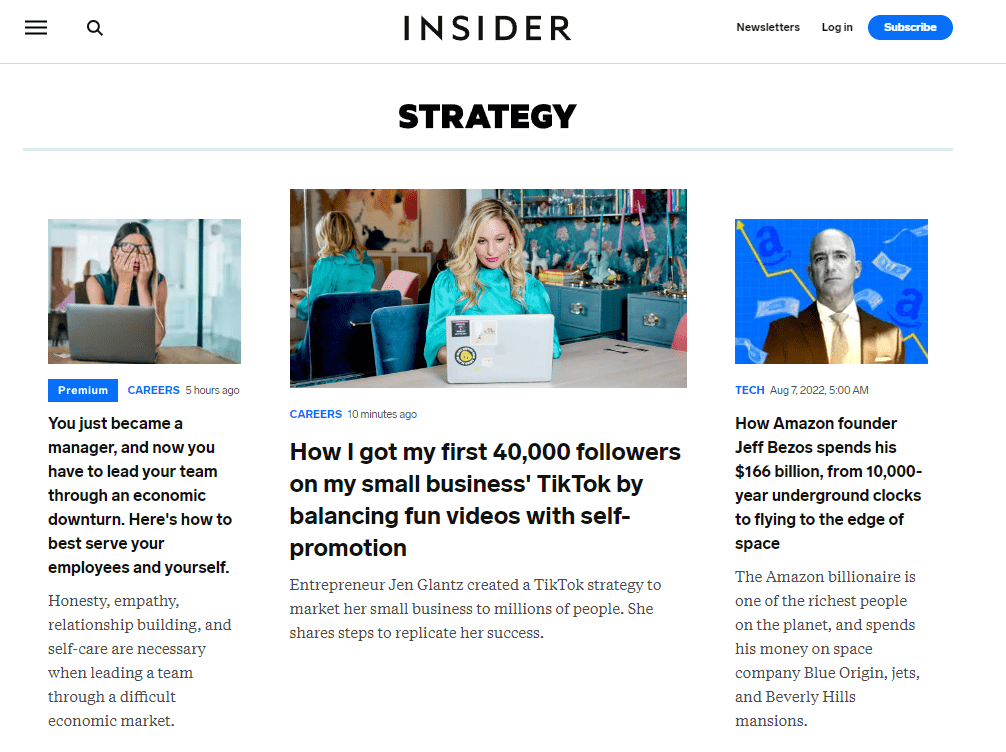
First things first, let's talk about design. Choosing a theme and colour scheme that resonates with your brand is vital. But keep going; create a logo design or banner that catches the eye. And if you're feeling adventurous, throw in some funky typography to make it pop. Remember, your blog is a reflection of you and your design prowess.
But design isn't just about aesthetics; it's also about user experience. Use plenty of images to make your blog visually appealing and break up text into short paragraphs. Nobody likes to stare at a wall of text; it's like trying to read a dictionary for fun. So, use plenty of white space to give your readers a break.
Oh, and remember your sidebar. Add widgets, banner ads, and other interesting tidbits that complement your content. It's like window shopping for your readers; give them something to explore.
The bottom line is that if your blog is visually unappealing, your bounce rate will be high. And that's not good for business. Think of your blog as your online storefront and your design skills as the product. You wouldn't sell a product in an unattractive store, would you? So, go ahead and flex those design muscles and create a blog that will leave a lasting impression on your readers.
Post Regularly
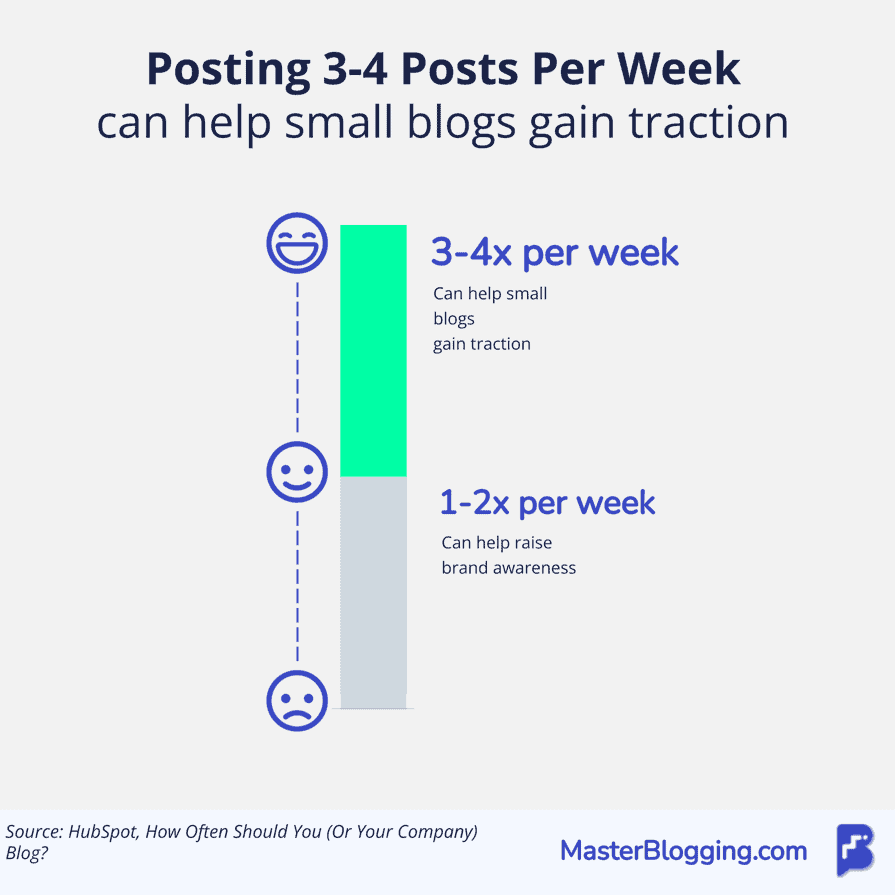
One of the most common questions is, “how often should I blog?” And like most things in life, the answer is, “it depends!”
Do you want to be a Blogging superstar and dominate the internet? Then you better be ready to put in some serious work! According to Hubspot, smaller blogs should post 3-4 times weekly to make an impact. But if you're starting or don't have the time to churn out that much content, 1-2 times per week is still a great way to build brand awareness and keep your audience engaged.
But here's the thing, folks: consistency is key! If you're going to blog once a week, make sure you do it on the same day and time every week. That way, your readers will know when to expect new content from you and keep returning for more. Plus, if you're anything like me, scheduling your posts in advance will help you stay on track and avoid the dreaded writer's block.
Now, I know what you're thinking. “But, what about quality over quantity?” Well, my friend, you're right! One epic, high-quality post per week will always be better than three pieces of subpar content. So, take your time, research, and create content you're proud of. Your readers will thank you for it!
Build a Content Strategy
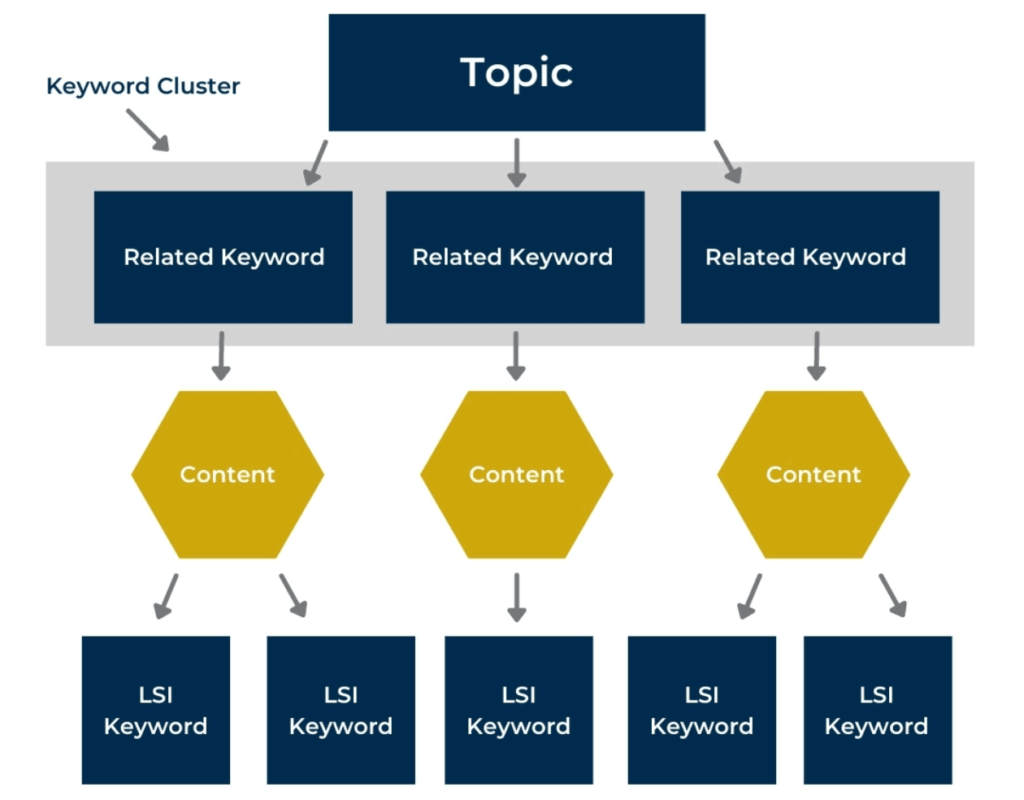
To keep your audience returning for more, you must serve content as irresistible as freshly-baked cookies. But how do you figure out what your readers are craving? It's simple: go straight to the source.
Peek at the customer persona you crafted at the beginning of your blogging journey. What makes them tick? What kind of content are they hungry for? Do they want a hearty helping of tutorials, or are they more interested in drooling over stunning visuals?
- Virji, Purna (Author)
- English (Publication Language)
- 352 Pages – 07/25/2023 (Publication Date) – Kogan Page (Publisher)
You can also understand your audience's wants by watching your blog's metrics. Are specific posts performing particularly well? Pay attention to what topics and formats resonate with your readers.
And let's remember the power of good old-fashioned interaction. Reach out to your audience directly through comments, social media, or email and ask them what they want to see more of. Remember, the customer is always right (unless they're asking for a blog post about how to turn lead into gold).
Keyword research
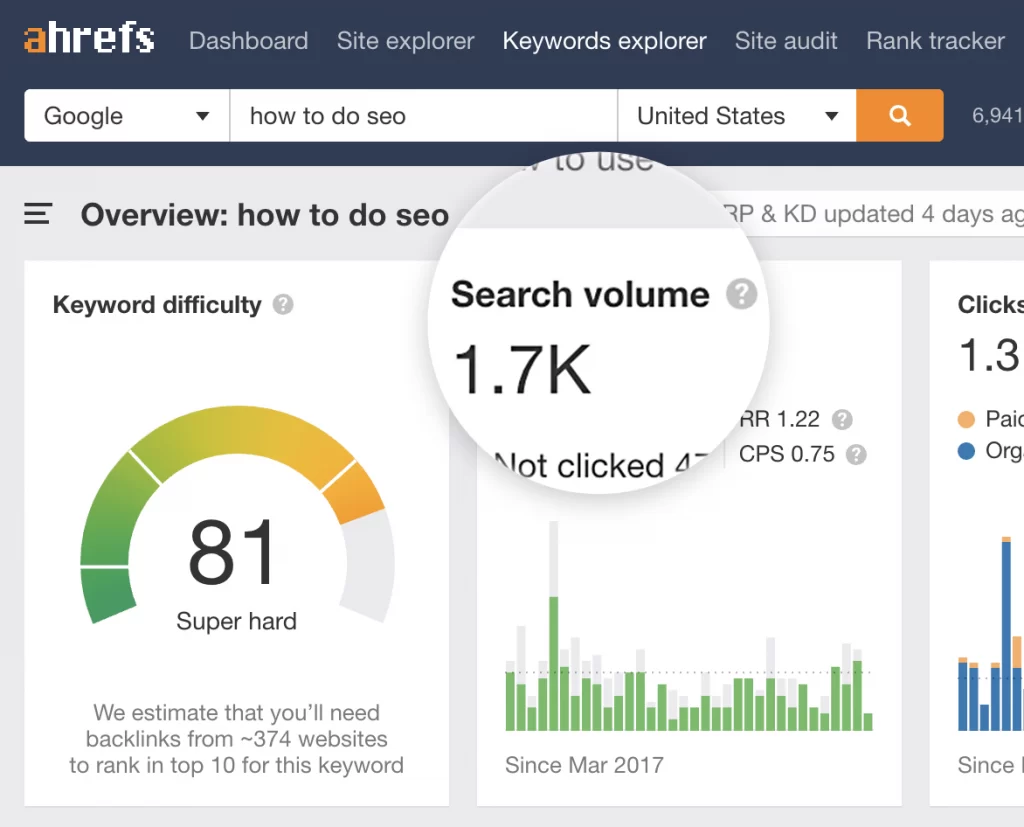
First, put on your thinking cap and brainstorm keywords and phrases that potential customers might use to find your content. And if you're feeling stuck, channel your inner psychic and ask yourself, “What would Google do?”
Once you have a list of potential search terms, it's time to whip out your wallet and download the Keywords Everywhere plugin. Don't worry; it's not as sketchy as it sounds. It's a fancy tool that shows you related keywords for your search terms, and it's cheaper than a cup of coffee (well, maybe not Starbucks).
Now comes the fun part. Go ahead and type in your generic search terms into Google. And boom, like magic, you'll see an estimated monthly search volume for that term. It's like getting a sneak peek into the minds of your potential customers. It's almost as if you're a secret agent, but instead of wearing a tuxedo, you're wearing your PJs.
But wait, there's more! Scroll down to see sections like “related keywords” and “people also search for.” Google is a virtual genie, granting you all your market research wishes. These sections will give you valuable insight into popular topics in your niche. It's like knowing the answers to the test before you even take it (but shhh, don't tell anyone I said that).
Now, pay attention because this is the golden rule. The best keywords to aim for are “high-volume, low competition.” It's like finding a unicorn, but better because it's real (sorry, unicorn lovers). You want to find keywords many people are searching for but only a few sites are trying to rank for. And don't worry; Google will tell you the competition score. It's like getting a grade for your keywords; the lower the number, the better.
So go forth, my market research warriors, and conquer the search engine results page with high-volume, low-competition keywords. And if you need me, I'll be sipping my virtual coffee and watching you from the sidelines.
Check out the Competition
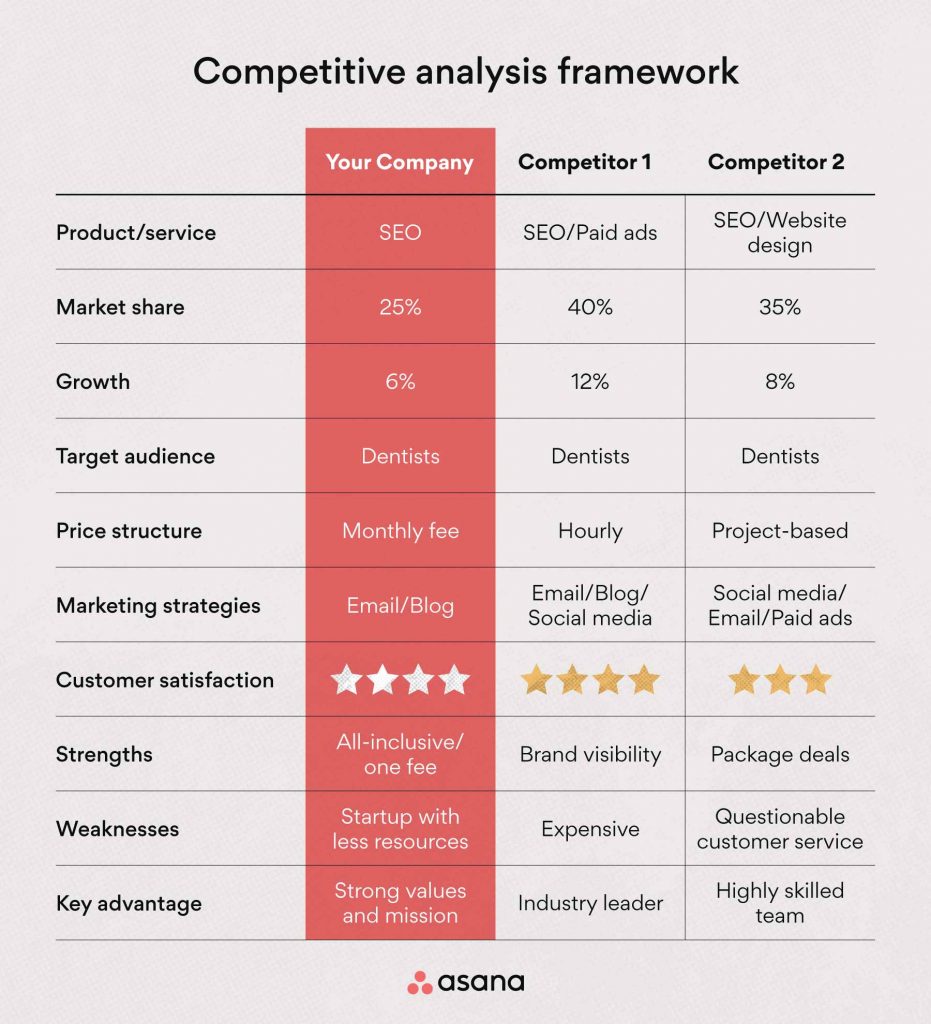
Do you need help coming up with new ideas for your niche? Fear not, for Google is here to save the day (or at least give you some inspiration).
First things first, let's do a little recon on the competition. We're not talking about sabotage; we're talking about checking out the most popular blogs in your niche. It's like spying on your neighbour's garden to see what flowers they're growing (but don't steal them, that's just mean).
Now, we're not saying you should copy your competitors. That's like wearing the same outfit as your arch-nemesis to the school dance. Instead, draw inspiration and ideas from their success. It's like taking the best parts of their business and adding flair. And who knows, maybe they'll copy you back (but don't hold your breath).
Don't fall into the trap of thinking that every idea has to be a completely original thought. That's like trying to reinvent the wheel but with a square shape. In reality, there are only a few entirely new ideas left. So, pick up on trends and popular topics and add your spin. It's like a remix but for blog content.
Remember, the topic might not be original, but your unique take sets you apart. It's like a signature move in a dance routine. No one else can do it quite like you, so embrace it!
Look at your Social Media Metrics
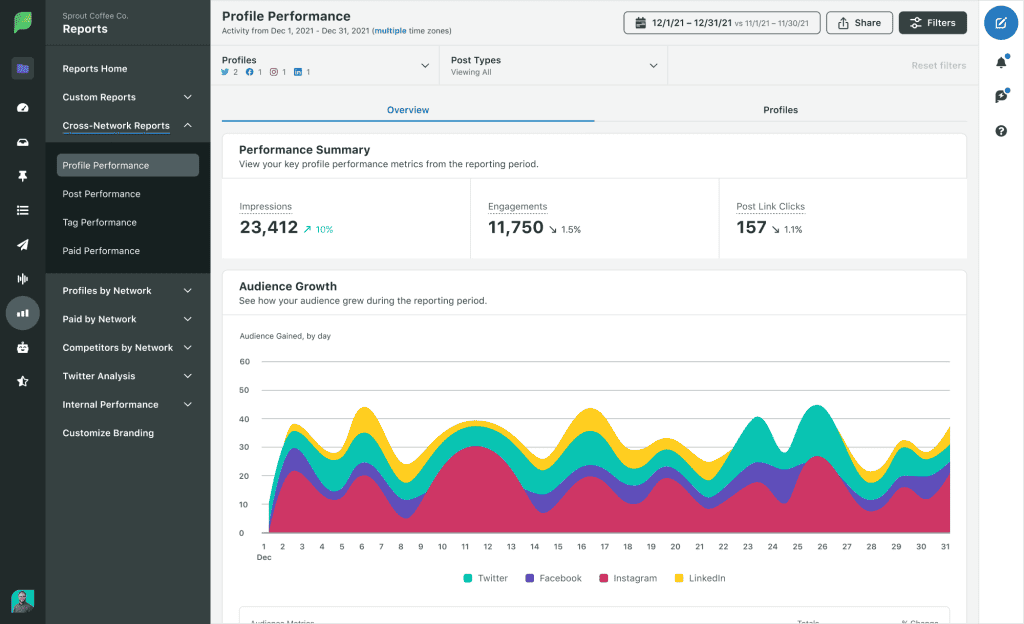
If you're anything like me, you're constantly trying to figure out what makes your followers tick. After all, what's the point of social media if not to amass an army of loyal fans who hang on to your every word, right?
But fear not because your social media analytics are here to save the day! Look at those numbers; you might see some patterns emerging. It's like a game of Where's Waldo, except you're looking for the secret to social media success instead of a bespectacled dude in a striped shirt.
And here's a pro tip: the same people who follow you on social media are likely the ones who will be interested in your blog content, too. It's like we're playing six degrees of separation for social media. But trust me; it's a real thing.
So, pay attention to what your followers engage with on social media, and use that to inform your blog content strategy. And don't be afraid to ask for their input! Imagine you're a designer trying to break into the industry. You could ask your followers, “what do you wish you'd known when you started?” It's like asking your audience for the answers to a test, except the test is how to create killer content.
Run a Survey
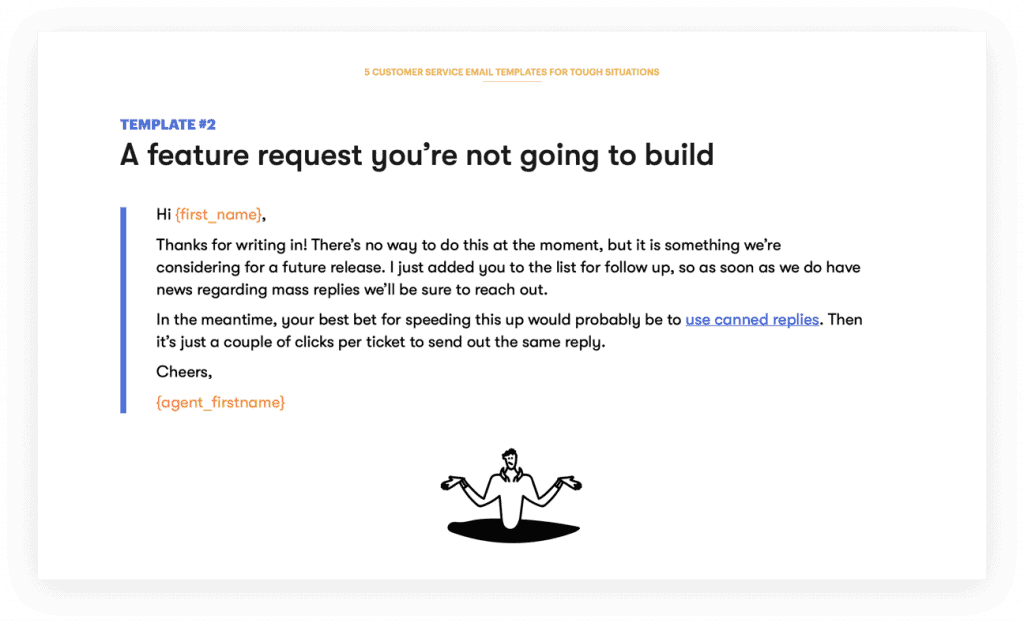
Do you ever feel like you're just shouting into the void, hoping that someone out there is listening? Fear not, because I've got a sneaky little trick to help you engage your existing audience and get them excited about your content.
Introducing…drumroll, please…the survey! It sounds about as exciting as watching paint dry, but hear me out. With a short survey created using SurveyMonkey or Google Forms, you can ask your subscribers and followers exactly what kind of content they want to see from you.
It's like having a direct line to your audience's brains! Except without all the creepy mind-reading stuff. And the best part? You can offer them an incentive, like a free piece of content or a chance to win a prize. Because who doesn't love free stuff? Am I right?
So, please take advantage of your email marketing list and social media presence, and ask your audience what they want. It's like going to a restaurant and ordering your favourite dish, except the restaurant is your content, and your audience is the chef. Okay, maybe that analogy doesn't work, but you get the idea.
And who knows, with the right content and incentives, your audience might start to see you as the Beyoncé of email marketing and social media.
Look at your Analytics
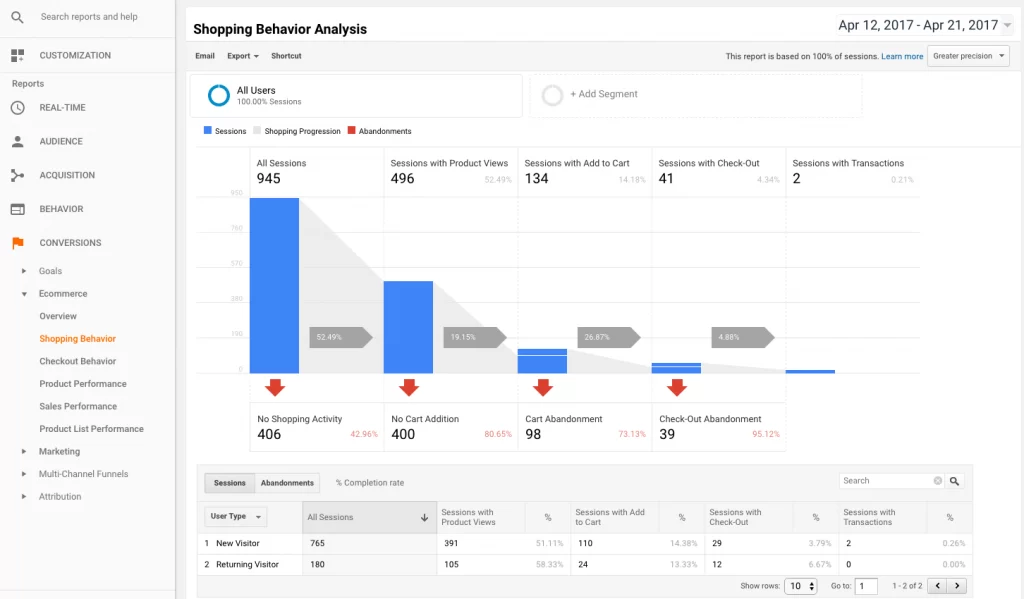
Well, well, well, look who's curious about their website's search terms! You know what they say, curiosity killed the cat, but satisfaction brought it back. And with Google Search Console, you can satisfy your interest and find out what search terms bring people to your site or blog.
It's like a secret agent mission, except instead of infiltrating a high-security facility, you're entering the minds of your audience. Okay, maybe that's a bit dramatic, but you get the idea.
Now, this strategy is for the strong of heart. If you've just launched your site or blog, you might see little data. But fear not, young grasshopper, for once you've been around for a while and have built up a following, Google Search Console will be your new best friend.
With this information, you can grow your content strategy and create the content your audience is searching for. It's like being a genie and granting your audience's wishes, except you have Google Search Console instead of a magic lamp.
Vary your Content
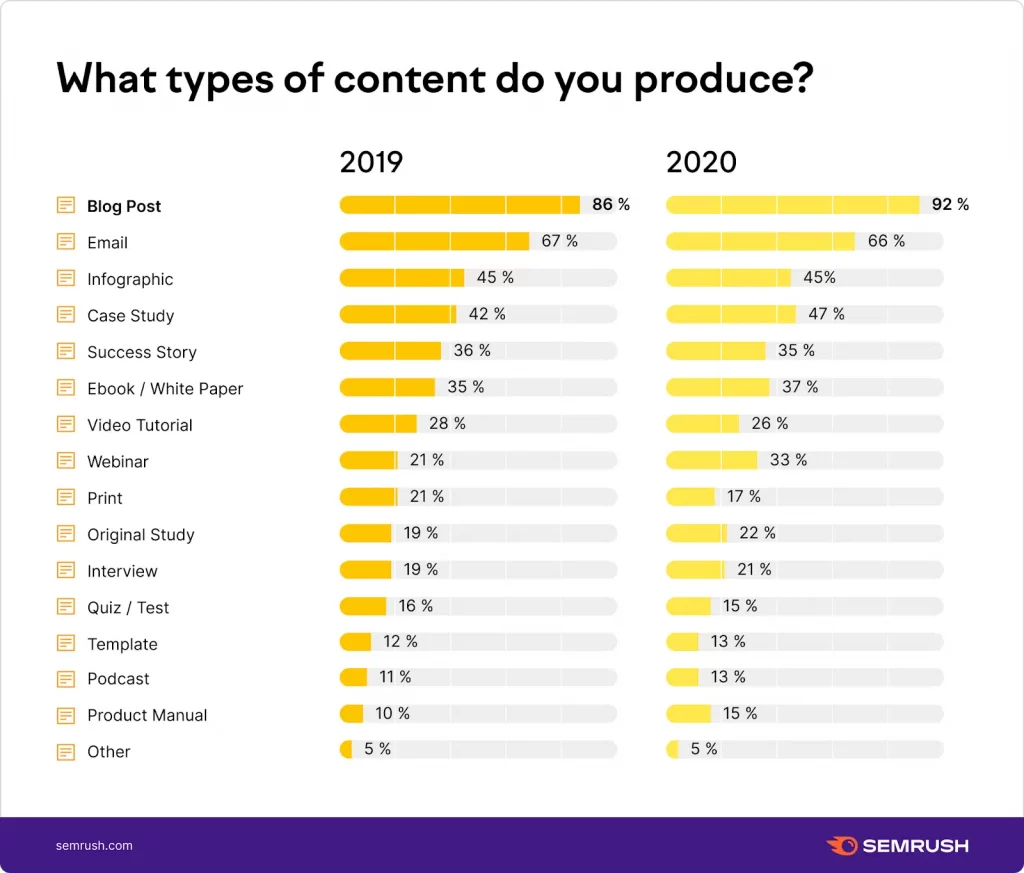
Ah, the wonderful world of content creation! It's like an extensive, beautiful buffet of different styles and formats, just waiting for you to dig in. And by changing the type and configuration of your content, you can keep your blog exciting and engage different groups of readers. It's like a culinary adventure, except instead of food, it's content.
So, without further ado, let's take a look at some of the formats you should consider:
- First up, we have the listicle. It's like a BuzzFeed article but without all the cat memes (although, who doesn't love a good cat meme?). Listicles are tremendously popular with marketers and readers alike. It's like a cheat sheet for your brain, giving you bite-sized pieces of information that are easy to digest.
- Next, we have how-tos and tutorials. It's like having a personal tutor, except without all the awkward small talk. Whether you're teaching someone how to fix a leaky faucet or build a website, how-tos and tutorials are a great way to provide value to your readers.
- Then, we have infographics. It's like a visual feast for your eyes, except instead of food, it's information. Infographics are a great way to break complex ideas into simple, easy-to-understand graphics.
- Moving on, we have industry news, views, and round-ups. It's like the CNN of your niche, except without all the drama (well, hopefully). Whether you're sharing breaking news or providing your perspective on industry trends, this format is a great way to position yourself as an expert in your field.
- Next, we have opinion pieces and personal essays. It's like a glimpse into your soul without all the therapy bills. Opinion pieces and personal essays are a great way to connect with your readers on a deeper level and share your experiences and insights.
- Then, we have case studies. It's like a detective story, except instead of solving crimes, you're solving problems. Case studies are a great way to showcase the results you've achieved for your clients or customers.
- Moving on, we have product or service reviews. It's like a Yelp review, except without all the snarky comments (hopefully). Product or service reviews are a great way to provide value to your readers and help them make informed purchasing decisions.
- And finally, we have new product launches. It's like a birthday party, except you get a new product instead of presents. New product launches are a great way to generate excitement and buzz around your brand.
Include a CTA and Direct to a Landing Page

There are plenty of ways to add a CTA to your blog post. You can be subtle, like placing it at the bottom of your content, or be more aggressive and use a pop-up to ensure your readers don't miss it. Make sure it's visible and easy to find, like your favourite coffee shop on a Monday morning.
And, of course, you want your readers to click on your CTA. That's where the lead magnet comes in. Think of it as the free sample station at Costco – everyone loves a freebie! So, offer your readers something they can't resist, like a free report or ebook. It's like giving a gift to a friend – they're more likely to stick around and see what else you offer.
But don't just stop at a freebie. If you want to seal the deal, offer a free consultation. It's like a sneak peek behind the curtain; your readers will appreciate the opportunity to connect with you more personally. Who knows? They might even become your next BFF – Best Fan Forever!
Promote your Design Blog

First up, remember your email list or e-newsletter subscribers. Share your new blog content with them, and give them a reason to check it out. Promise some juicy insider tips or laughs (if you're feeling funny).
Social media is another great place to share your content. But don't just post a link and call it a day. Mix it up by sharing quotes or graphics from your blog posts. Or even post a funny meme (please ensure it's relevant).
If you're feeling adventurous, why not repurpose your blog content into a video format? Share it on your Youtube channel and see if your audience responds well. Remember to keep it engaging – no one wants to watch a boring video.
- Kingsnorth, Simon (Author)
- English (Publication Language)
- 416 Pages – 05/31/2022 (Publication Date) – Kogan Page (Publisher)
Of course, investing in PPC advertising or paid social media ads can give your blog a real boost. But if you're on a budget, don't worry. You can also share your content on social bookmarking sites like Reddit or Pinterest. And if you're feeling social, join reciprocal sharing platforms like Viral Content Bee. You scratch their back; they scratch yours. It's a win-win.
Finally, remember that blog promotion takes time. You can only expect overnight success if you're a viral sensation (but let's not get our hopes up). Keep putting in the effort, and your blog will multiply.
Focus on SEO

Ah, SEO – the magic elixir that can make or break your online presence. If you're not familiar with it, SEO is like the mysterious and ever-changing algorithm of the Sphinx. Instead of asking you riddles, it decides whether or not your content is worthy of being on the first page of Google search results.
But fear not, dear blogger! With careful research and some elbow grease, you, too, can harness the power of SEO. By using white hat SEO techniques (that's the good kind, not the “I'm going to try to game the system”), you can ensure that your blog posts show up higher in search results, bringing in more traffic and potentially more revenue.
Why is this so important, you ask? If you're not on the first page of Google search results, you might as well be shouting into the void. According to some studies, the top 3 results on any Google search get a decent 54.4% of all clicks. So, if you're not in that top 3, you're missing out on many potential readers and customers.
So, how do you optimise your content for SEO? There are a lot of different factors to consider, from the words you use in your headlines to how you structure your content. But if you stick to best practices and keep up with the latest trends and algorithms, you'll be well on your way to SEO success. And, best of all, you won't have to worry about getting smacked with a Google penalty – because nobody wants to get on the wrong side of the Sphinx.
Guest Posting

To boost your SEO game, you must get on the backlink bandwagon! And the easiest way to do that is by becoming a guest-posting machine.
But not just any guest post will do. Target sites relevant to your niche with a Domain Rating of 50+ and traffic of 3000+ visitors per month. You're looking for more popular sites than the latest TikTok dance challenge.
Once you've found a site that fits the bill, it's time to butter up the editor like a fresh batch of popcorn. You'll need to charm them into letting you write a guest post, so get ready to pull out all the stops. Compliment their site, tell them how much you admire their work, and maybe even offer to send them a basket of fruit (okay, perhaps not that last one).
Assuming you've convinced the editor that you're the next Ernest Hemingway, it's time to deliver the goods. Write a fantastic piece of informative, engaging, entertaining content that could win an Oscar. If your post is good enough, you'll get a link back to your blog from a more authoritative source than your mom when she tells you to eat your vegetables.
So there you have it, folks. Guest posting is the key to unlocking the doors of backlink heaven. Just remember to target suitable sites, charm the editors like a pro, and write a post that's so good it'll make your competitors cry.
Focus on Keywords (without stuffing)
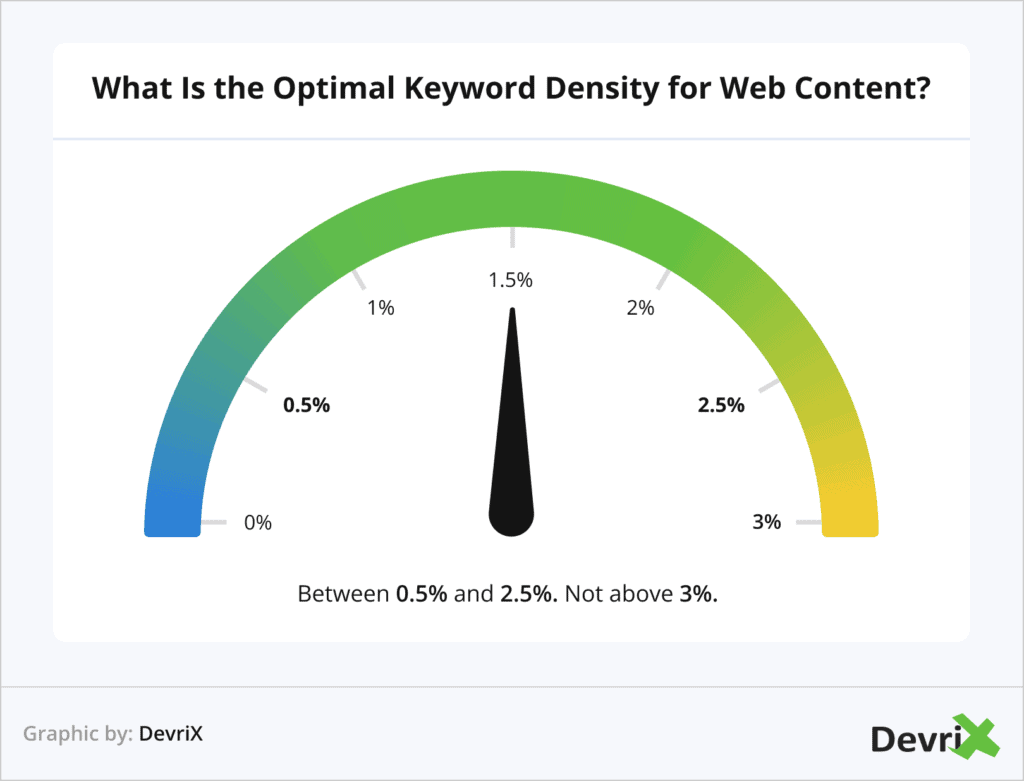
If you're writing content for your website, you must optimise it for a specific keyword or phrase. And no, “supercalifragilisticexpialidocious” is not a keyword (although it is fun to say).
But be warned, too much of a good thing can be bad. If you include your keyword too many times, it's called “keyword stuffing”. Think of it like adding too much salt to your fries – it might seem like a good idea at first, but you'll regret it later.
Not only does keyword stuffing lead to poor-quality content, but it can also hurt your SEO. And trust us; you don't want to mess with Google. It's like trying to fight a grizzly bear with a toothpick.
What is the magic number of times you should include your keyword in a blog post? The answer is 3-5 times, my friends. That's it. Don't go overboard like a kid at a candy store.
And remember to include your keyword in the title of your post and at least one of your H2 or H3 headers. Think of it like a scavenger hunt – you want your keyword in all the right places.
Use Alt Tags
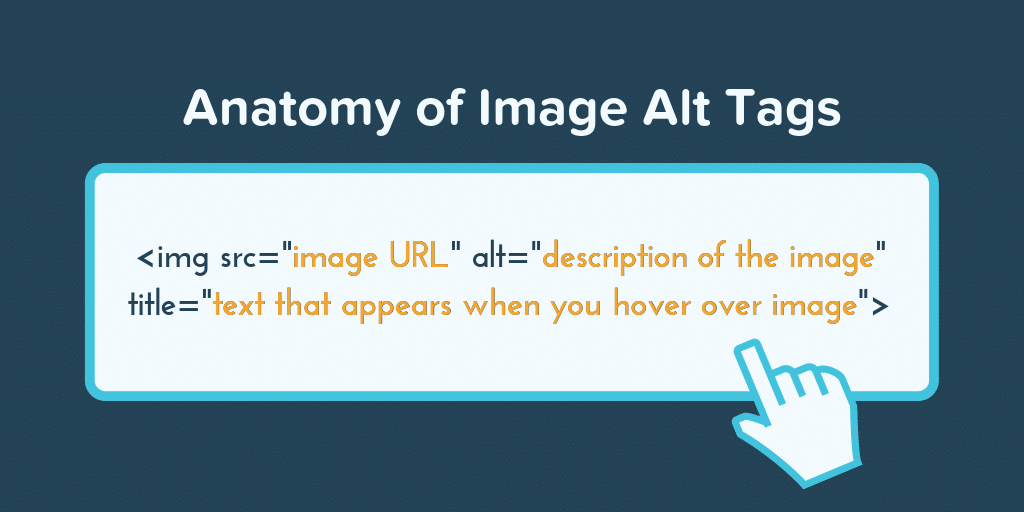
Now, alt tags serve two fundamental purposes. First, they improve accessibility for those who are blind or partially sighted and rely on screen readers to browse the web. And let's be honest; we don't want to exclude anyone from our website just because they can't see it.
Second, alt tags help Google and other search engines understand what the image is all about. It's like playing a game of Pictionary – you want to make sure your team (in this case, Google) can guess what you're drawing.
So, how do you add these magical alt tags to your images? It's simple. Just dive into your CMS and add them directly to the picture. It's like giving your image a little name tag so it can introduce itself to the world.
But here's the catch: keep your alt tags under 125 characters. Think of it like a Twitter post for your image. You want to be specific and describe well, but keep it short and sweet.
Optimise the User Experience (UX)
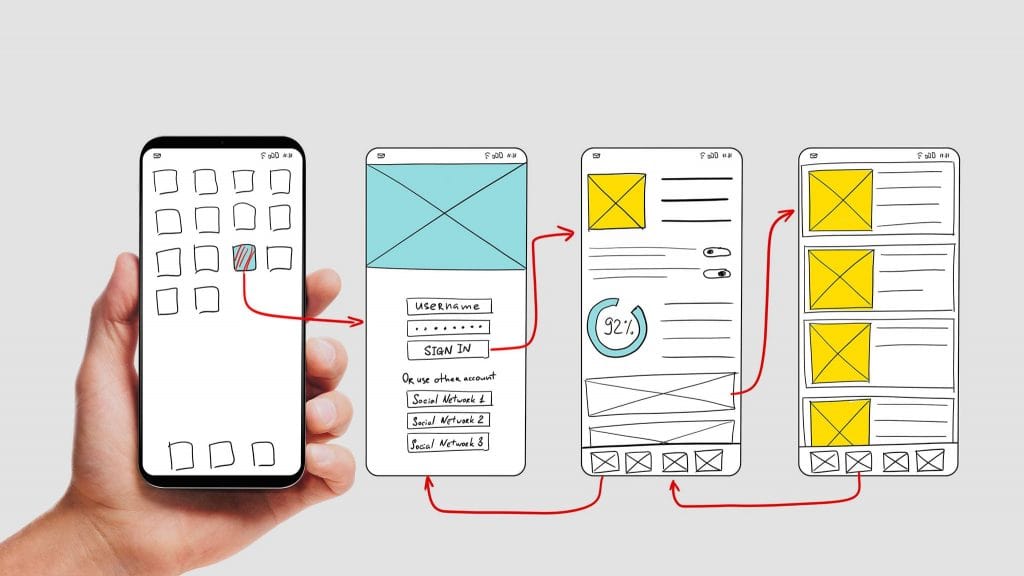
Google's algorithm is like a fickle lover – constantly changing its mind about what it wants. And right now, it's all about that user experience (UX).
Yes, that's right. You must ensure your website is as user-friendly as possible to impress Google and get those sweet SEO results. And I'm not talking about giving your users massages and foot rubs (although that wouldn't hurt).
No, I'm talking about your bounce rate, site visit length, percentage of returning visitors, and site navigation. These are the things that make Google swoon.
So, let's break it down. First up, page speed. Users don't have to wait for your website to load all day. They're busy people with busy lives (or at least, they like to pretend they are). So, optimise your page speed to keep them happy and get that top spot on Google's search results.
Next, mobile-friendliness. We all know that mobile devices are taking over the world (cue dramatic music), so your website must be mobile-friendly. If it's not, you might as well be trying to sell VHS tapes in 2023.
- Metts, Michael J. (Author)
- English (Publication Language)
- 200 Pages – 01/14/2020 (Publication Date) – Rosenfeld Media (Publisher)
Oh, and speaking of content, make sure it's over 1200 words long. That's like the perfect length for a good blog post. Any shorter is like conversing with someone who only responds with one-word answers.
Last but not least navigability. You want your users to be able to find what they're looking for without having to put on their Indiana Jones hats and go on a treasure hunt. Simplify your site's layout and make it easy to navigate. Your users will thank you, and Google will too.
So, there you have it. If you want to impress Google and get those sweet, sweet SEO results, focus on your UX. It's like being in a relationship – if you treat your users right, they'll keep returning for more.
Monetise your Design Blog
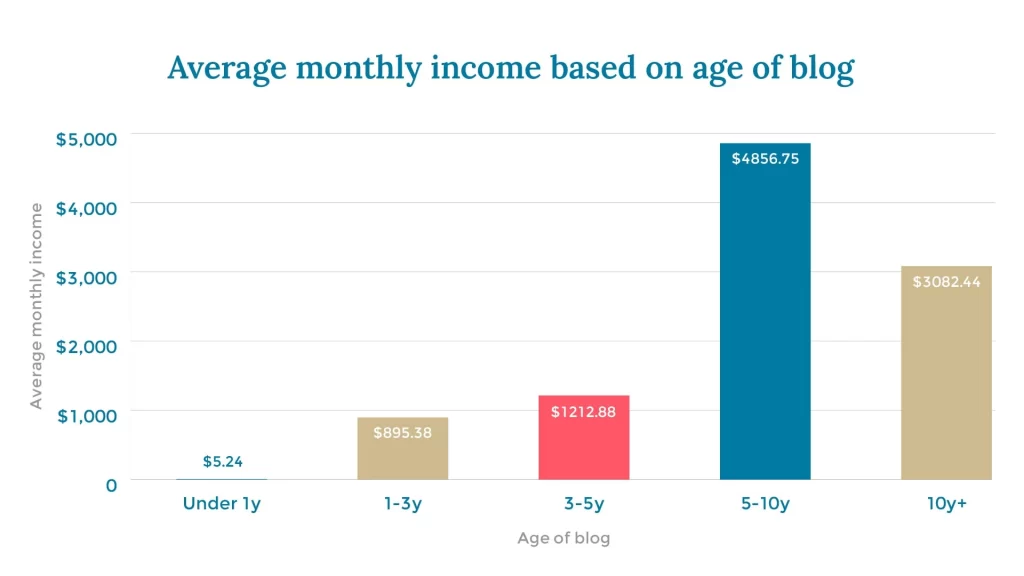
Look who's made it to the big leagues! You've got a beautiful blog and a loyal audience, and you've even invested in some sweet SEO to climb the search engine rankings. But what's next, you ask? It's time to get that cash, baby!
Yes, that's right, it's time to monetise your blog. After all, you've put in all this hard work, so why not make some dough while at it? Think of it as a side hustle to your side hustle.
Since your blog is an extension of your business, using it to generate extra income makes sense. But how, you ask? Well, there are a few different ways you can go about it.
First up, you can sell ad space on your blog. Think of it like renting out your forehead as billboard space, except way less weird. Ensure the ads are relevant to your audience and don't make your blog look like Times Square.
Next, you can offer sponsored content or product reviews. Just disclose that you're getting paid for it, or you might end up with a few angry readers. And nobody wants that.
Joining a few affiliate and referral programs might also be a good idea. It is easily done when you have your blog and can be a great source of passive income in the future.
You can also sell digital products related to your blog's niche, like ebooks or courses. Ensure they're high quality and helpful, or you'll have many angry customers. And, again, nobody wants that.
Finally, you can offer to coach or consulting services to your readers. After all, they trust you and your expertise, so why not allow them to work with you one-on-one?
If you've got a blog worth its weight in gold (or at least worth its weight in bitcoin), it's time to start monetising. Remember, with great power comes great responsibility… and excellent income potential.
Start a Design Blog and Grow your Brand
If you're looking for a way to kick your design business up a notch, look no further than blogging! With the right effort and clever marketing, a blog can do wonders for your brand.
You can attract more traffic to your website, build your marketing list, increase your sales, and gain a loyal following. Plus, once your audience is hooked, you can even start making extra cash on the side! Who doesn't love some passive income?
So, put down the design tools for a minute and start a design blog today! Trust me; it'll be worth it.
Last update on 2024-05-11 / Affiliate links / Images from Amazon Product Advertising API




I respect everything that you have written in this blog. Please continue to provide wisdom to more people like me.